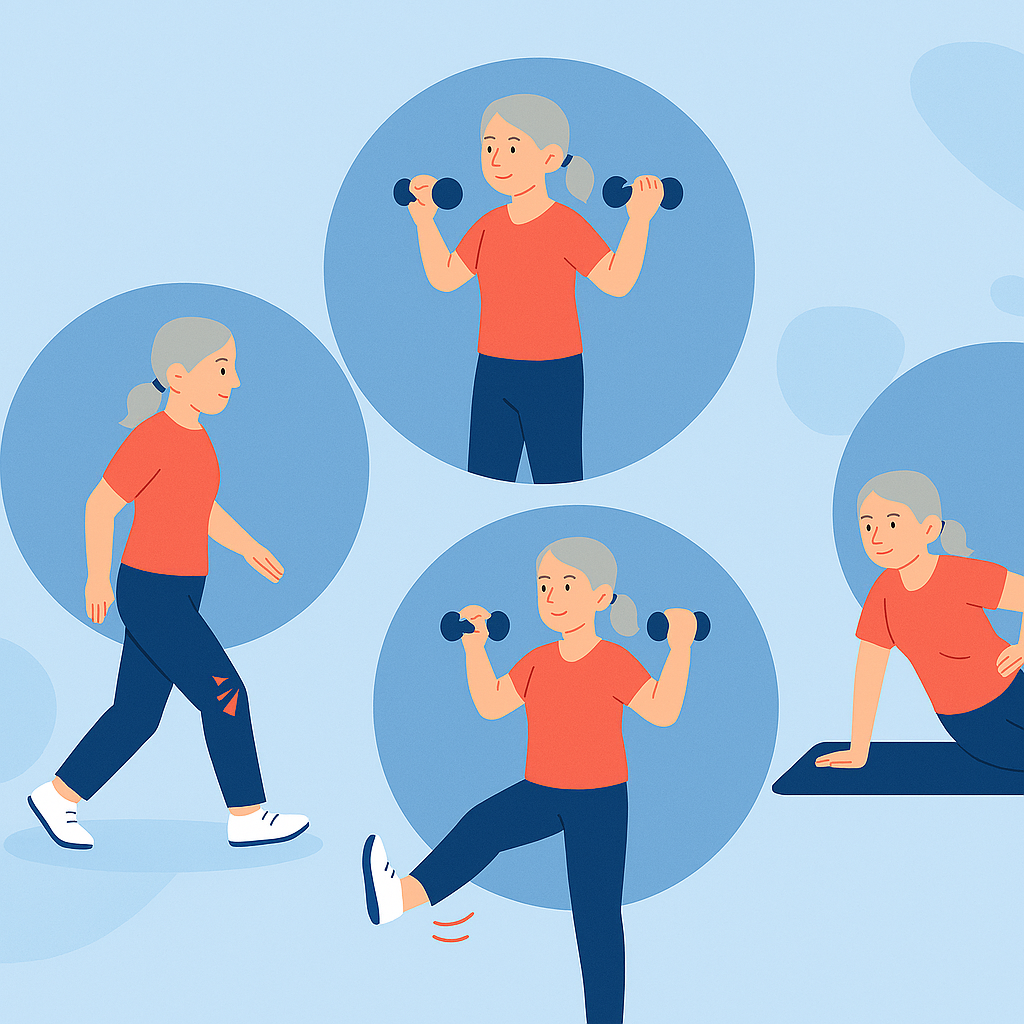Osteoarthritis (OA) is a long-term joint disease characterized by the degeneration of the cartilage and stiffness of the joint that affects millions of people in the world and particularly adults who are 45 and older. To a large number of people, the condition may be akin to an obstruction to motility.
However, in practice, mild, specific physical activity is one of the best methods of dealing with osteoarthritis. It not only removes the pain and stiffness but also enhances joint performance, balance, and quality of life.
In this blog, we will discuss how people with osteoarthritis can make their body stronger without further strain using tools that are safe, sustainable, and empowering of movement patterns.
Why Exercise is Crucial for Managing Osteoarthritis
People often move away when they are in pain in their joints. But, on the contrary, inactivity is the cause of worsening the condition. A long period of rest causes muscles to weaken, stiff joints, and loss of mobility- a vicious cycle of pain and decay.
But on the other hand, the right exercises:
- Lubricate joints
- Build supporting muscles
- Promote balance and posture
- Lose the stiffness and inflammation
- Treatment of mood and energy through endorphin-related release
Even a light daily movement can be considered a form of natural therapy for osteoarthritis when directed correctly.
Key Principles: Exercise Without Overloading the Joints
In case of OA, emphasis should be made on low-impact and joint-friendly exercises designed to increase strength and flexibility as well as to reduce the pressure put on the knees, the hips, the spine, or the hands. It will be necessary to follow the following principles:
- Be scrupulous, not serious
- Utilize the action of large muscle groups controlled in the movement
- Adjust harmony and shape more than repetitions
- Avoid such high-impacting exercises as running, plyometrics
- Additional rest and recovery between sessions
Now, what kinds of exercises on what principles?
Chair-Based Strength Training
What it is: Seated toning exercises, which work the major muscle areas, such as thighs, calves, and arms, with the use of body weight, light dumbbells, or resistance bands.
Advantages: It will support them and minimize the risk of falling, as well as strengthen options in knees or hip arthritis.
Examples:
- Seat leg lifts
- Light weights Bicep curls
- Seated marches
- Sitting resistance band rows
Why it works: Joints will be aligned, and muscles around them will be stimulated without weight-bearing pressure. The movements will enhance strength without using any weight. One can buy a stair climber to do the leg training properly.
Isometric Exercises
What it is: Static is the holding of muscles without joint action—as an example, contracting the thighs or glutes when walking and holding the tension a bit.
Advantages: Muscle endurance is developed, and the joints are not subjected to dynamic stress.
Examples:
- Wall sits
- Supine glute pinches
- Quad sets (Bend the thigh muscles and keep the leg straight)
Why it helps: Isometrics is a pain-free way to strengthen muscles around the painful joint, especially when osteoarthritis is at an early stage.
The paradigm of movement-based empowerment is not an exception, even in the case of osteoarthritis. It can be done merely with a conscious attitude, a sprinkling of patience, and a dedication to the practice of one soft-spoken rep at a time.



